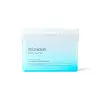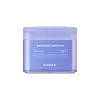What's inside
What's inside
 Key Ingredients
Key Ingredients

 Benefits
Benefits

 Concerns
Concerns

No concerns
 Ingredients Side-by-side
Ingredients Side-by-side

Water
Skin ConditioningButylene Glycol
HumectantGlycerin
HumectantDipropylene Glycol
HumectantSaccharomyces/Rice Ferment Filtrate
Skin Conditioning1,2-Hexanediol
Skin ConditioningLimnanthes Alba Seed Oil
Skin ConditioningMicrocrystalline Cellulose
AbsorbentPentylene Glycol
Skin ConditioningPanthenol
Skin ConditioningCellulose Gum
Emulsion StabilisingAllantoin
Skin ConditioningEthylhexylglycerin
Skin ConditioningAcrylates/C10-30 Alkyl Acrylate Crosspolymer
Emulsion StabilisingAdenosine
Skin ConditioningDiphenyl Dimethicone
EmollientTriethylhexanoin
MaskingPolyglyceryl-3 Methylglucose Distearate
EmulsifyingDisodium EDTA
Hydrogenated Lecithin
EmulsifyingPolyglyceryl-10 Myristate
Skin ConditioningMethyl Glucose Sesquistearate
EmollientCetearyl Glucoside
EmulsifyingBifida Ferment Lysate
Skin ConditioningLactobacillus Ferment Lysate
Skin ConditioningStreptococcus Thermophilus Ferment
HumectantTocopherol
AntioxidantSodium Hyaluronate
HumectantSodium Ascorbyl Phosphate
AntioxidantCeramide NP
Skin ConditioningHydroxypropyltrimonium Hyaluronate
Hydrolyzed Hyaluronic Acid
HumectantSodium Acetylated Hyaluronate
HumectantPotassium Hyaluronate
Skin ConditioningSodium Hyaluronate Crosspolymer
HumectantHydrolyzed Sodium Hyaluronate
Skin ConditioningWater, Butylene Glycol, Glycerin, Dipropylene Glycol, Saccharomyces/Rice Ferment Filtrate, 1,2-Hexanediol, Limnanthes Alba Seed Oil, Microcrystalline Cellulose, Pentylene Glycol, Panthenol, Cellulose Gum, Allantoin, Ethylhexylglycerin, Acrylates/C10-30 Alkyl Acrylate Crosspolymer, Adenosine, Diphenyl Dimethicone, Triethylhexanoin, Polyglyceryl-3 Methylglucose Distearate, Disodium EDTA, Hydrogenated Lecithin, Polyglyceryl-10 Myristate, Methyl Glucose Sesquistearate, Cetearyl Glucoside, Bifida Ferment Lysate, Lactobacillus Ferment Lysate, Streptococcus Thermophilus Ferment, Tocopherol, Sodium Hyaluronate, Sodium Ascorbyl Phosphate, Ceramide NP, Hydroxypropyltrimonium Hyaluronate, Hydrolyzed Hyaluronic Acid, Sodium Acetylated Hyaluronate, Potassium Hyaluronate, Sodium Hyaluronate Crosspolymer, Hydrolyzed Sodium Hyaluronate
Water
Skin ConditioningDipropylene Glycol
Humectant1,2-Hexanediol
Skin ConditioningBetaine
HumectantSodium PCA
HumectantHydroxyacetophenone
AntioxidantOctyldodeceth-16
EmulsifyingHydroxyethyl Urea
HumectantDipotassium Glycyrrhizate
HumectantSodium Citrate
BufferingAllantoin
Skin ConditioningXanthan Gum
EmulsifyingHydroxyethylcellulose
Emulsion StabilisingCitric Acid
BufferingDisodium EDTA
Olea Europaea Fruit Oil
MaskingGlycerin
HumectantSea Water
HumectantMyosotis Sylvatica Flower/Leaf/Stem Extract
Skin ConditioningButylene Glycol
HumectantPolyglyceryl-10 Laurate
Skin ConditioningAbies Sibirica Oil
MaskingHydrogenated Lecithin
EmulsifyingRosmarinus Officinalis Leaf Oil
MaskingPseudoalteromonas Ferment Extract
HumectantSalvia Sclarea Oil
MaskingCetraria Islandica Extract
CleansingMentha Aquatica Extract
TonicAnthemis Nobilis Flower Oil
MaskingJuniperus Mexicana Oil
MaskingChamomilla Recutita Flower Oil
MaskingMangifera Indica Fruit Extract
Skin ConditioningLactobacillus Ferment
Skin ConditioningCaprylyl Glycol
EmollientWater, Dipropylene Glycol, 1,2-Hexanediol, Betaine, Sodium PCA, Hydroxyacetophenone, Octyldodeceth-16, Hydroxyethyl Urea, Dipotassium Glycyrrhizate, Sodium Citrate, Allantoin, Xanthan Gum, Hydroxyethylcellulose, Citric Acid, Disodium EDTA, Olea Europaea Fruit Oil, Glycerin, Sea Water, Myosotis Sylvatica Flower/Leaf/Stem Extract, Butylene Glycol, Polyglyceryl-10 Laurate, Abies Sibirica Oil, Hydrogenated Lecithin, Rosmarinus Officinalis Leaf Oil, Pseudoalteromonas Ferment Extract, Salvia Sclarea Oil, Cetraria Islandica Extract, Mentha Aquatica Extract, Anthemis Nobilis Flower Oil, Juniperus Mexicana Oil, Chamomilla Recutita Flower Oil, Mangifera Indica Fruit Extract, Lactobacillus Ferment, Caprylyl Glycol
 Reviews
Reviews

Ingredients Explained
These ingredients are found in both products.
Ingredients higher up in an ingredient list are typically present in a larger amount.
1,2-Hexanediol is a synthetic liquid and another multi-functional powerhouse.
It is a:
- Humectant, drawing moisture into the skin
- Emollient, helping to soften skin
- Solvent, dispersing and stabilizing formulas
- Preservative booster, enhancing the antimicrobial activity of other preservatives
Allantoin is a soothing ingredient known for its protective and moisturizingg properties. Because of this, it is often added to products with strong active ingredients.
Studies show higher concentrations of this ingredient can promote wound healing.
Though it can be derived from the comfrey plant, allantoin is produced synthetically for cosmetic products to ensure purity.
Learn more about AllantoinButylene Glycol (or BG) is used within cosmetic products for a few different reasons:
Overall, Butylene Glycol is a safe and well-rounded ingredient that works well with other ingredients.
Though this ingredient works well with most skin types, some people with sensitive skin may experience a reaction such as allergic rashes, closed comedones, or itchiness.
Learn more about Butylene GlycolDipropylene Glycol is a synthetically created humectant, stabilizer, and solvent.
This ingredient helps:
Dipropylene glycol is technically an alcohol, but it belongs to the glycol family (often considered part of the ‘good’ alcohols). This means it is hydrating and gentle on skin unlike drying solvent alcohols like denatured alcohol.
As a masking agent, Dipropylene Glycol can be used to cover the smell of other ingredients. However, it does not have a scent.
Studies show Dipropylene Glycol is considered safe to use in skincare.
Learn more about Dipropylene GlycolDisodium EDTA plays a role in making products more stable by aiding other preservatives.
It is a chelating agent, meaning it neutralizes metal ions that may be found in a product.
Disodium EDTA is a salt of edetic acid and is found to be safe in cosmetic ingredients.
Learn more about Disodium EDTAGlycerin is already naturally found in your skin. It helps moisturize and protect your skin.
A study from 2016 found glycerin to be more effective as a humectant than AHAs and hyaluronic acid.
As a humectant, it helps the skin stay hydrated by pulling moisture to your skin. The low molecular weight of glycerin allows it to pull moisture into the deeper layers of your skin.
Hydrated skin improves your skin barrier; Your skin barrier helps protect against irritants and bacteria.
Glycerin has also been found to have antimicrobial and antiviral properties. Due to these properties, glycerin is often used in wound and burn treatments.
In cosmetics, glycerin is usually derived from plants such as soybean or palm. However, it can also be sourced from animals, such as tallow or animal fat.
This ingredient is organic, colorless, odorless, and non-toxic.
Glycerin is the name for this ingredient in American English. British English uses Glycerol/Glycerine.
Learn more about GlycerinHydrogenated Lecithin is created from the hydrogenation of lecithin (a group of phospholipids). Hydrogenation is a chemical reaction between hydrogen and another element.
This ingredient is an emollient and emulsifier. As an emollient, it helps soften skin by trapping moisture within. As an emulsifier, it prevents oil and water ingredients from separating.
Water. It's the most common cosmetic ingredient of all. You'll usually see it at the top of ingredient lists, meaning that it makes up the largest part of the product.
So why is it so popular? Water most often acts as a solvent - this means that it helps dissolve other ingredients into the formulation.
You'll also recognize water as that liquid we all need to stay alive. If you see this, drink a glass of water. Stay hydrated!
Learn more about Water